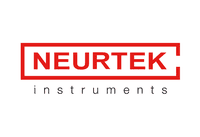Elcometer 510: Precise adhesion tester for every application
Learn how the Elcometer 510 is used to precisely determine adhesion strength.
Learn moreFree DE shipping from €250

Price excl. VAT

Price excl. VAT

Price excl. VAT

Price excl. VAT
Price excl. VAT

Price excl. VAT

Price excl. VAT

Price excl. VAT

Price excl. VAT
Adhesion describes the adhesion strength between coating and substrate as well as the cohesion within the layer. It is determined using Pull-Off tensile tests according to ISO 4624 and ASTM D4541 or with the Cross-Cut method according to ISO 2409 and ASTM D3359. Additionally, scratch/scribe tests (ISO 1518), bending tests (ISO 1519) and cupping tests (ISO 1520) are applied. All systems are calibratable and offer functions for statistics and report generation.
Instruments for adhesion testing are used in wet paint and powder coating, steel construction, the automotive industry, railway and shipbuilding as well as maintenance. They assess adhesion on metallic and non-metallic substrates as well as the cohesion within the coating. Correctly selected systems ensure release approvals, prevent rework and enable audit-proof documentation – from the laboratory to the construction site.
Pull-Off Test (ISO 4624 / ASTM D4541): Selection of the appropriate dolly diameter and material depending on substrate and coating thickness. Use of a suitable adhesive with defined curing time. The load is applied at a defined pull rate until failure occurs, followed by evaluation according to adhesive, cohesive or mixed failure. This method provides quantitative adhesion values and is used for release testing.
Cross-Cut (ISO 2409 / ASTM D3359): Execution of defined cut patterns with standardized blade spacing and controlled application pressure. The standardized tape removal procedure enables fast, comparable assessment of adhesion, especially for production lines and routine tests.
Complementary tests: ISO 1518 (scratch/scribe resistance), ISO 1519 (bending test) and ISO 1520 (cupping/Erichsen test) assess additional properties such as elasticity, surface hardness and resistance to deformation. These methods complement adhesion evaluation with mechanical performance aspects.
Documentation: Photographic recording of failure images, clear label and QR identification of specimens as well as automated PDF/CSV export of results. Serial number and user assignment ensure traceability and audit compliance within the quality system.
The portfolio includes tensile testers (manual, hydraulic or automatic), dollies, adhesives, cross-cut tools, scribers, test frames and calibration/reference kits. In addition, apps, cloud solutions and interfaces for digital measurement data acquisition are available. We define test scope, standard reference (ISO 4624, ASTM D4541, ISO 2409, ASTM D3359, ISO 1518, 1519, 1520) and test point plans and integrate the instruments into existing QS workflows, photo and report archives and audit processes. This results in transparent, standard-compliant and audit-ready testing procedures with digital traceability.
Direct to adhesion – or consulting & instrument configuration.
Learn how the Elcometer 510 is used to precisely determine adhesion strength.
Learn moreBeschichtpunkt strengthens its presence in the industrial coating technology market. Learn how new sales structures and partnerships further improve customer consulting and support.
Learn moreRelevant areas: Inspection kits, Climate measuring devices, Viscosity, pH measurement. Coating resistance measurement.
Key methods are Pull-Off according to ISO 4624 and ASTM D4541 with test dollies as well as Cross-Cut according to ISO 2409 and ASTM D3359. Additionally, scratch/scribe (ISO 1518), bending (ISO 1519) and cupping (ISO 1520) are applied depending on the system and specification.
Selection depends on substrate (steel, non-ferrous metal, concrete), coating system/thickness, expected adhesion, dolly diameter/material, adhesive & curing, environment (ΔT/humidity) and the required load rate and failure classification according to ISO 4624/ASTM D4541. Traceable calibrations are important.
Through defined surface preparation, correct dolly bonding/curing, constant load rate, test point planning, repetitions, statistics (mean, standard deviation, limit testing) and complete records with photos/failure images, QR/labels, serial number/user/date and PDF/CSV export.
We configure Pull-Off systems, dollies & adhesives as well as cross-cut tools incl. calibration, test point planning and documentation – compliant with ISO 4624/2409 and ASTM D4541/D3359. Result: audit-proof documentation, reproducible results and minimal rework.
Request nowPlease feel free to contact us by phone or email and we will advise you quickly, competently and without obligation.
Mon-Fri, 9:00 a.m. - 5:00 p.m
If your shopping cart value exceeds 250.00 euros, we will deliver your order free of charge. If it saves delivery time, we will ship in multiple packages, of course at no additional cost.
Whether you live in Europe, Asia or the Americas – we deliver reliably to all regions of the world. This way you receive your order wherever you need it.
Ordering securely also means paying securely - we offer you various payment methods, such as purchasing on account, paying with PayPal or even credit card.
Ordered incorrectly or is it incompatible? Simply contact us within 14 days and exchange unused and originally packaged products free of charge.
We only sell products from well-known manufacturers or alternatives of equivalent quality. Feel free to convince yourself of our range.
Our customers rate us 4.52 out of 5.00 stars. With buyer protection, your purchases are protected, regardless of the payment method.
Functional cookies are absolutely necessary for the functionality of the web shop. These cookies assign a unique random ID to your browser so that your unhindered shopping experience can be guaranteed over several page views.
Allows Google to collect personal data for online advertising and marketing.
These cookies are used for statistics and shop performance metrics.
Tracking cookies help the shop operator to collect and evaluate information about the behaviour of users on their website.
These cookies are used to collect and process information about the use of the website by users, in order to subsequently personalise advertising and/or content in other contexts.
Marketing cookies are used to display advertisements on the website in a targeted and individualized manner across multiple page views and browser sessions.
Service cookies are used to provide the user with additional offers (e.g. live chats) on the website. Information obtained via these service cookies may also be processed for site analysis.

